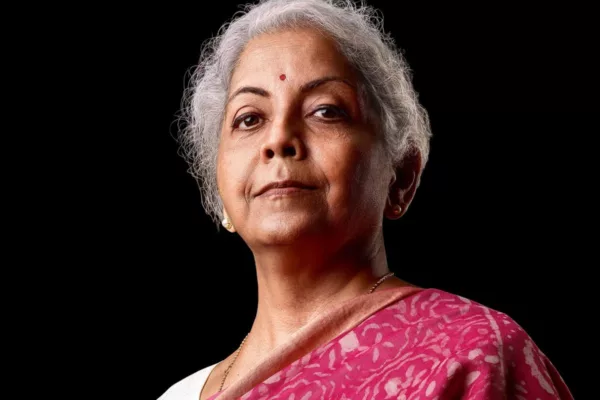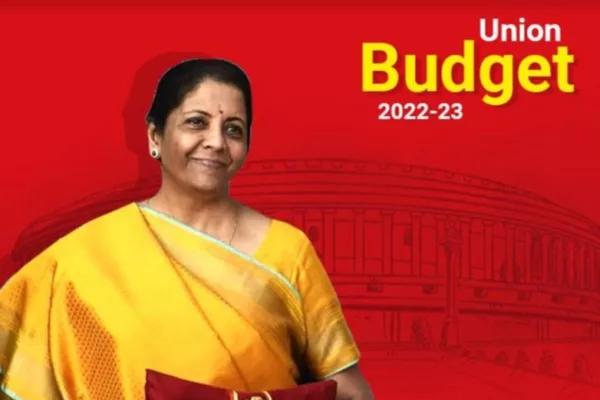India’s annual mobile phone production increased to 31 crore units: FM

India’s annual mobile phone production increased to 31 crore units: FM.
Nirmala Sitharaman, the finance minister, announced a reduction in customs taxes on the import of several parts used to manufacture mobile phones on Wednesday. Her report comes as prominent companies look for a China plus one strategy, and India has successfully set itself as a global technology powerhouse.
Because of the Center’s enabling procedures, multiple incentive programmes, and commitment to fostering competition in the industry, India has overtaken China to become the second-largest mobile phone producer in the world.
The customs duty on specific open cells in TV panels would be reduced to 2.5 per cent, while the charge on electric kitchen chimneys has been raised to 15 per cent from 7.5 per cent, according to Sitharaman.
However, she revealed that the government would maintain the 2.5% introductory customs rate good to scrap copper. In addition, the finance minister announced a 16 per cent increase in the price of cigarettes and the necessary customs charge on things made from gold bars. Said the government would lower the customs charge on shrimp feed.

PM Modi introduced Vishwakarma “-a related budgetary agenda.
For delivering an “inclusive” budget on Monday, Prime Minister Narendra Modi praised Minister of Finance Nirmala Sitharaman and her staff. In his statement following the budget, the prime minister stated, “This year’s Budget breathes new vigour to India’s development trajectory.”
According to Prime Minister Modi, who cited the Pradhan Mantri Kaushal Vikas Yojana 4.0, people performing “Vishvakarma,” or traditional labour for the country, with their hands, are its founders. The budget now includes a programme for the first time related to related services for “Vishvakarma.”
In her Budget address for 2023–24, she stated that the manufacture of mobile phones in India surged from 5.8 crore units in 2014–15 to 31 crore units in the fiscal year.
“Pradhan Mantri Kaushal Vikas Yojana 4.0 would be initiated to skill lakhs of youth within the next three years,” the budget for 2023 states. A focus will be put on building courses to match the needs of the industry, collaborating with it, and providing on-the-job training.
The curriculum, a part of Industry 4.0, will include cutting-edge training in coding, AI, robotics, mechatronics, IOT, 3D printing, drones, and soft skills. To train young people for opportunities overseas, 30 Skill India International Centers will be constructed in different States.
The Finance Minister added that creating a single Skill India Digital platform would “further extend the digital ecosystem for skilling, help demand-based formal skilling, link with employers including MSMEs, and facilitate access to entrepreneurship initiatives.”
Regarding the new tax brackets, Prime Minister Modi praised the finance minister for strengthening the middle class. To empToddle type and assure ease of life, he stated, “Our government has taken different actions.
In line with the lower tax rate, we have provided help budget, green jobs, green infrastructure, and green growth are encouraged for a sustainable future. In the budget, we have given particular attention to technology and the new economy, PM Modi continued.
The prime minister has stated about women’s emancipation; the government has taken different initiatives to make women’s lives simple in urban and rural areas, further improved by women’s self-help organisations. There will be a unique savings programme launched to support home ladies.

The budget for FM Sitharaman unveiled the FY2024 Sitharaman raised the capital expenditure outlay by 33% to 10 lakh crore in 2023–2024, which would be 3.3% of the GDP, in her approximately 90–minute speech, representing a rise of capital expenditures. On Wednesday, the FM made several changes to the income tax slabs.
In the budget for 2023–2024, Sitharaman stated that persons with a total income of up to 5 lakh rupees now do not pay any tax because of refunds under both the old and new regimes.
“It is suggested to extend the refund for the resident person under the new system so that they are exempt from paying tax if their income is up to Rs. 7 lacks,” Sitharamlahksdded.
Additionally, she stated that there would be only five tax brackets under the new personal income tax structure. Up to Rs. 3 lacks in income would not be subject to taxation under the revised concessional tax regime. Income between 3-6 lakhs would be taxed at 5%; 6-9 lakhs at 10%; 9-12 lakhs at 15%; 12-15 lakhs at 20%; and income over 15 lakhs at 30%.
“I suggest extending the expected premise benefits to the new tax code. There will be a 52,500 benefit for every salaried worker with an income of at least 15.5 lakh rupees, Sitharaman stated.
On Wednesday, the government proposed granting Sebi permission to establish, oversee, and carry out rules and regulations for training at the National Institute of Securities Markets due to the incapacity of market participants and experts (NISM).
A drop in the customs levy imposed on the import of a few ingredients used in the production of mobile phones was announced by Sitharaman.
In her Budget address for 2023–24, she stated that the manufacture of mobile phones in India surged from 5.8 crore units in 2014–15 to 31 crore units during the most recent fiscal year.
On Wednesday, Sitharaman suggested increasing the deposit limits for the Monthly Income Account Scheme and Senior Citizen Savings Scheme by 30 lakhs and nine lakhs, respectively. She recommended raising the maximum deposit limits for the Monthly Income Account Scheme from 4.5 lacks to 9 lacks for a single account and from 9 lakhs to 15 lakhs for a combined invoice.
The finance minister launched the “Azadi Ka Amrit Mahotsav Mahila Samman Bachat Patra,” a one-time new small savings programme available for two years up to March 2025.

She explained, “This will give a saving option up to Rs. 2 lacks in the name of women or girls for a term of 2 years at a fixed reasonable rate of 7.5% with a partial withdrawal option.
edited and proofread by nikita sharma



